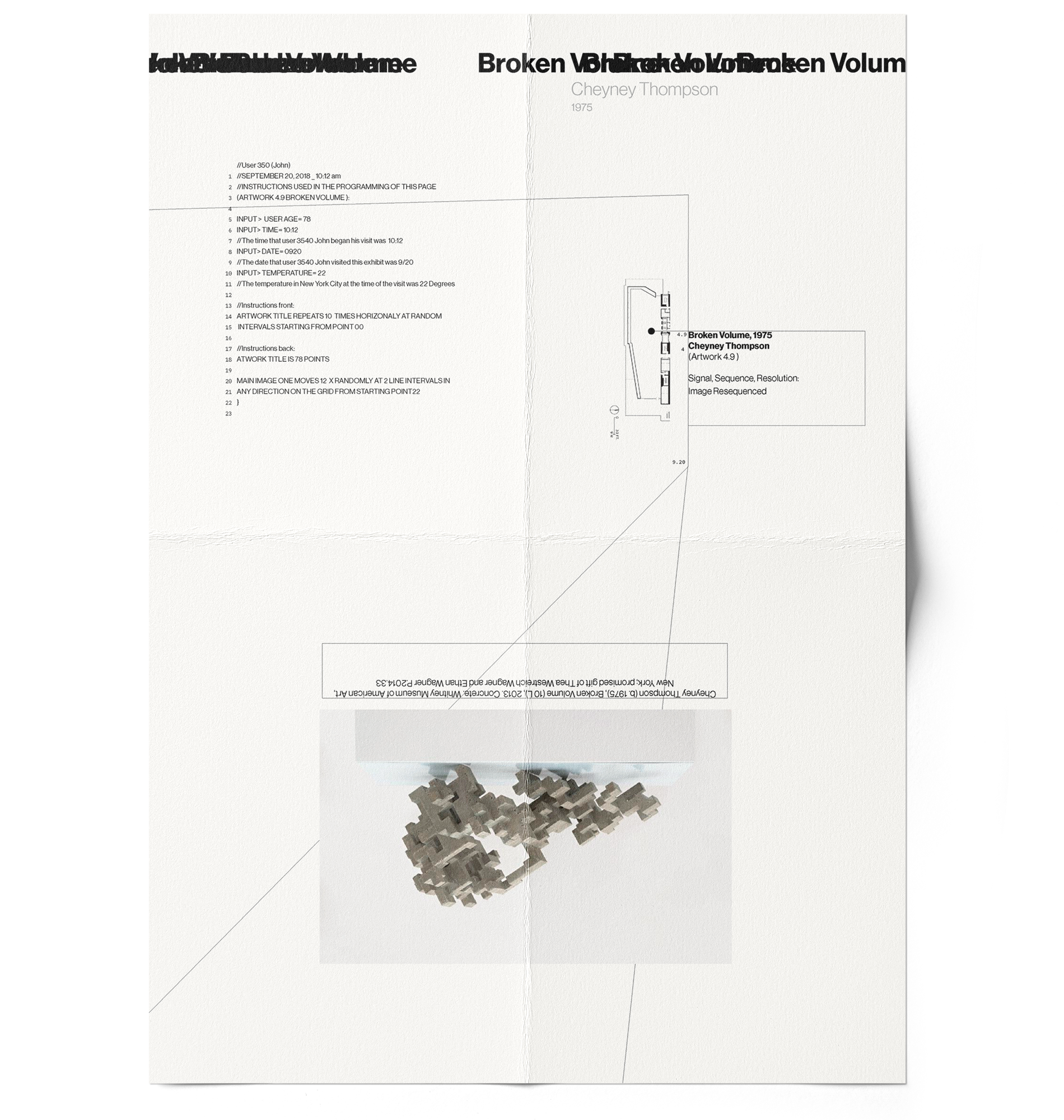



︎Above: Print on demand catalogue pages envisioned for the Whitney Museum’s Exhibition: Programming, Rules, Codes and Choreographies in Art, 1965 -2018, Each A3 page is a unique, personalized layout based on data generated by the individual visitor. Pages printed on newsprint, folded in four, stacked and bound with an elastic band and delivered in a plain mailing envelope to the visitors home. Designed in response to the prompt “The Book as an Exhibition”.
︎Below: Proposed permanent exhibiton catalogue which featured a random selection of user generated pages, an introduction and index printed A3 size on newsprint with exposed glue binding. Each catalogue could be generated randomly or to specific criteria, for example, only pages generated by visitors on a certain date, or at a certain outdoor temp, etc.
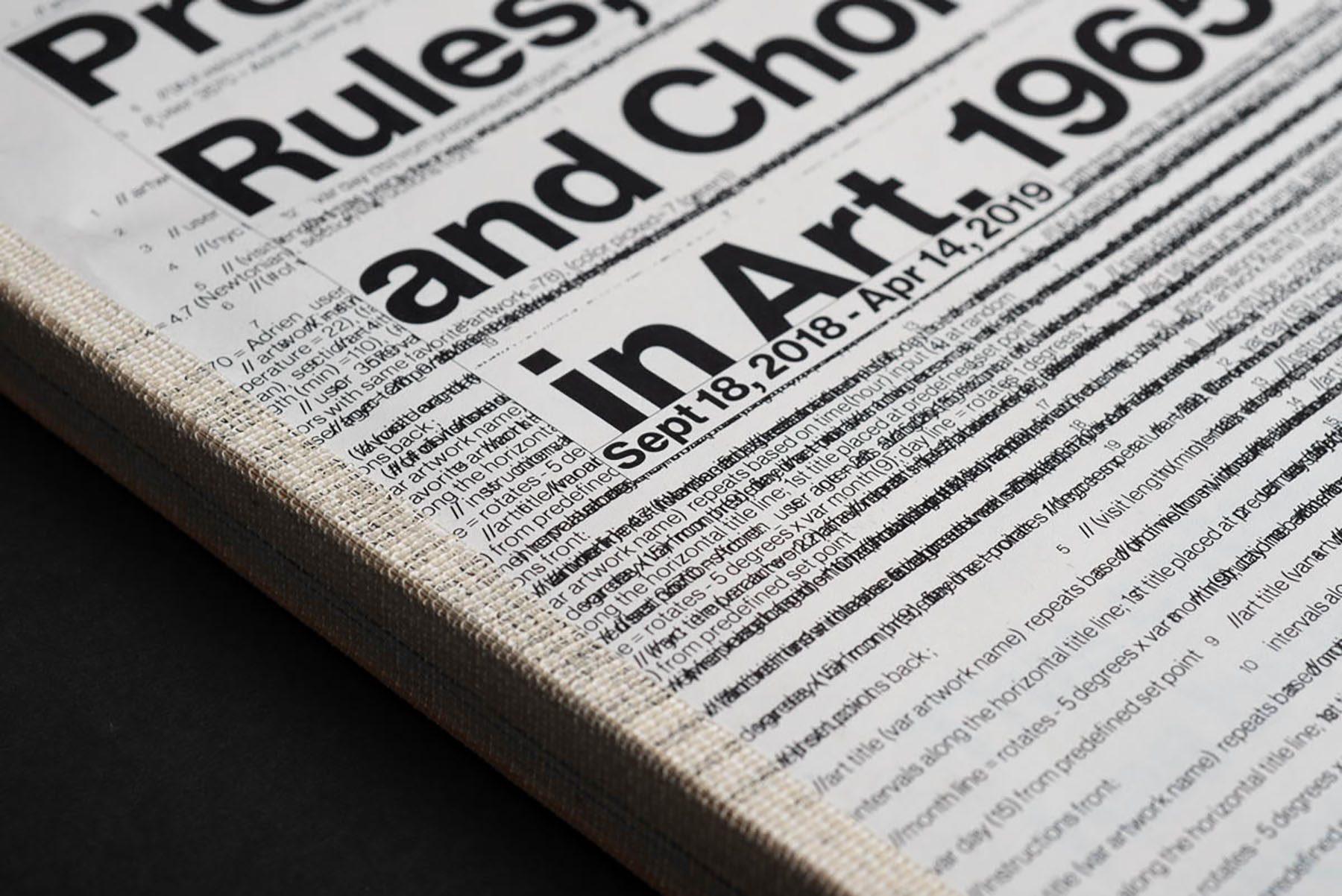

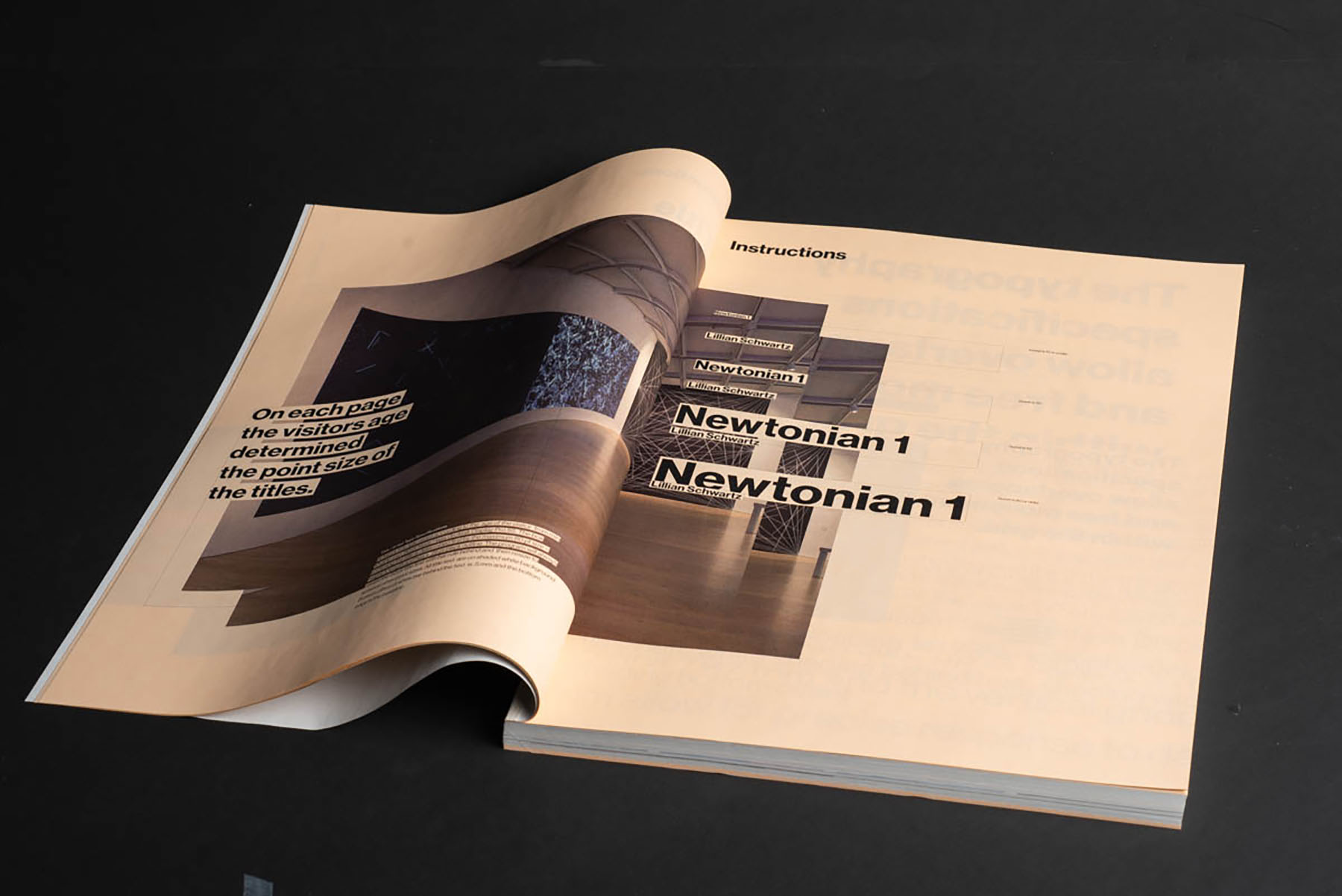
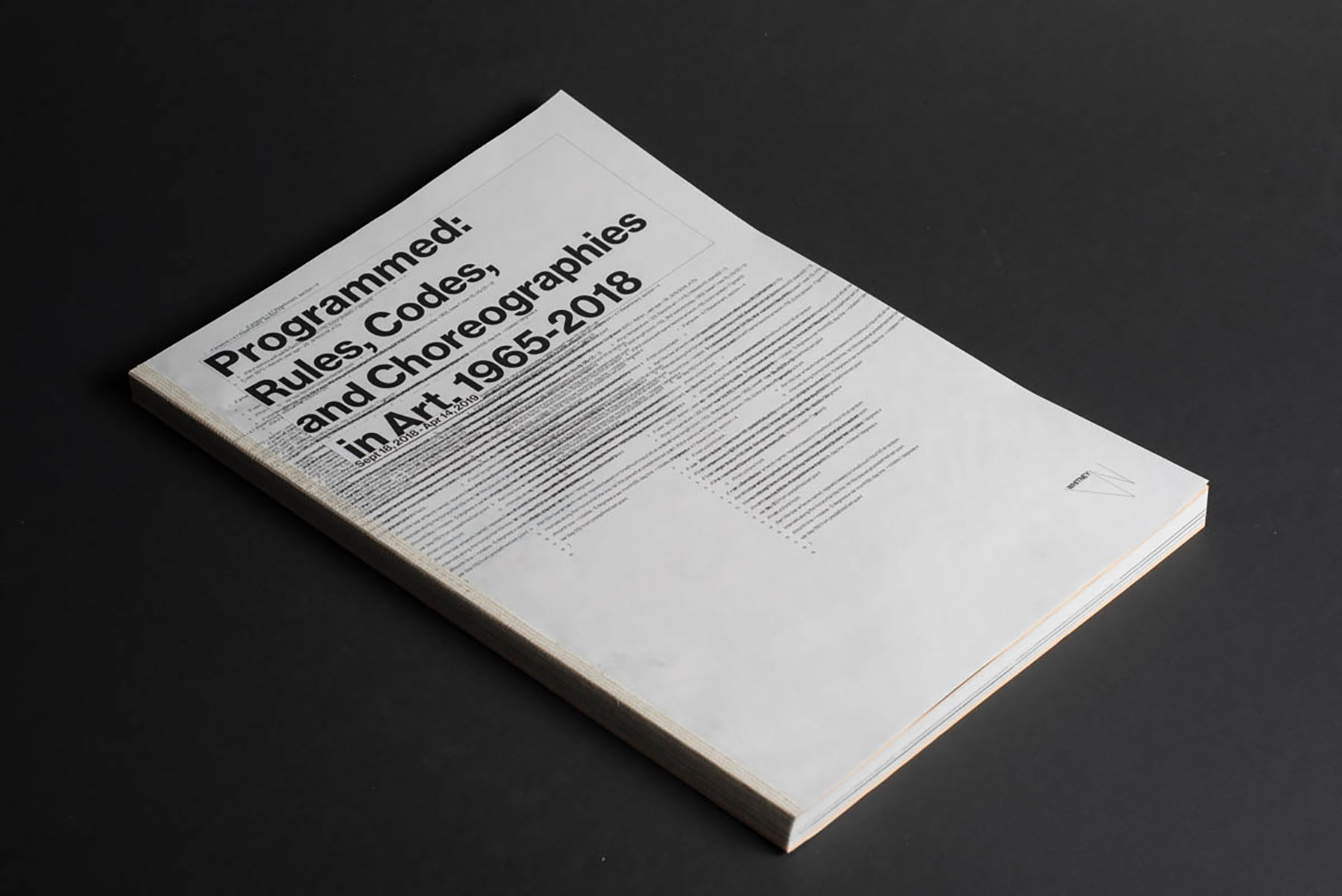























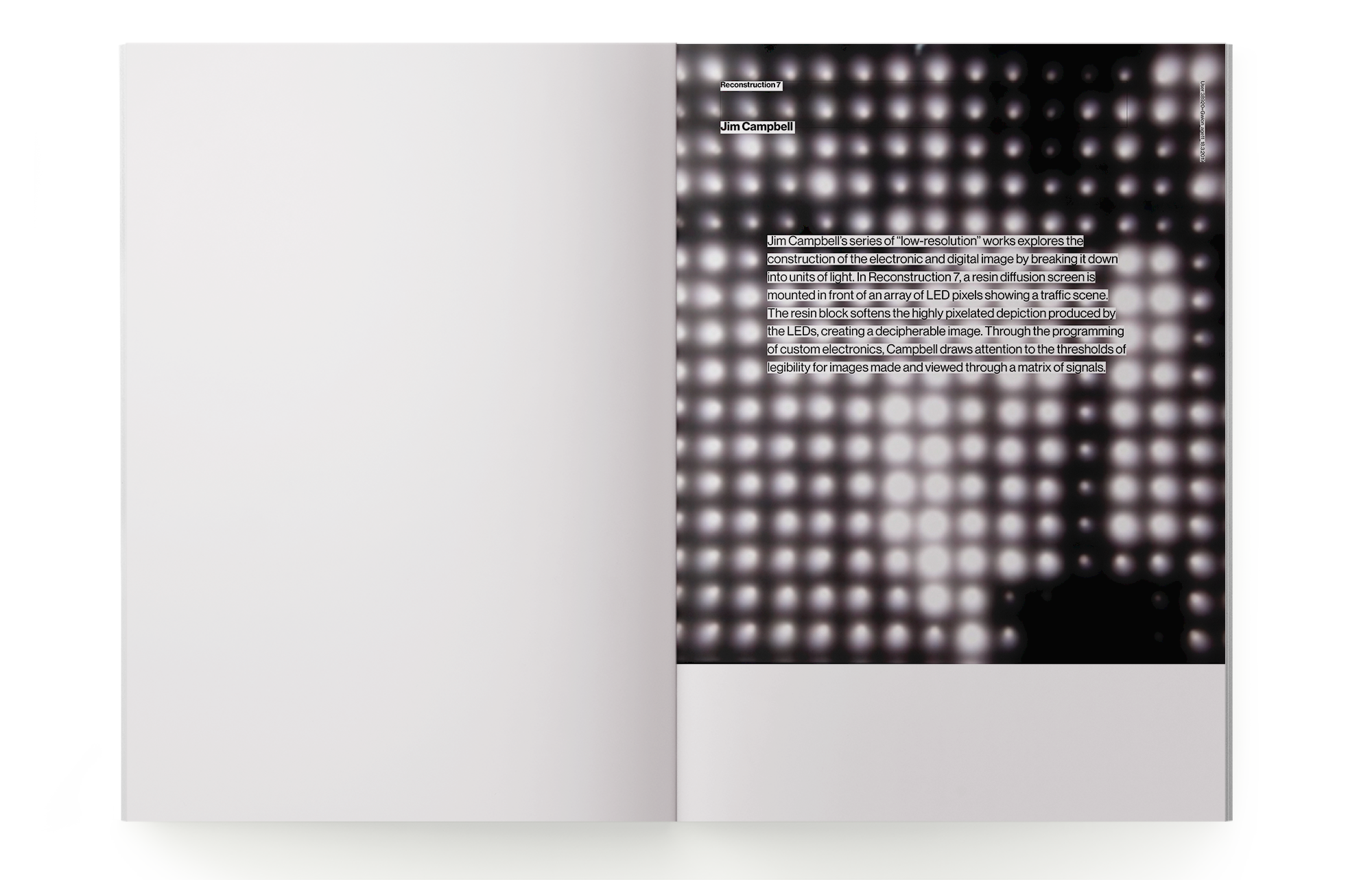



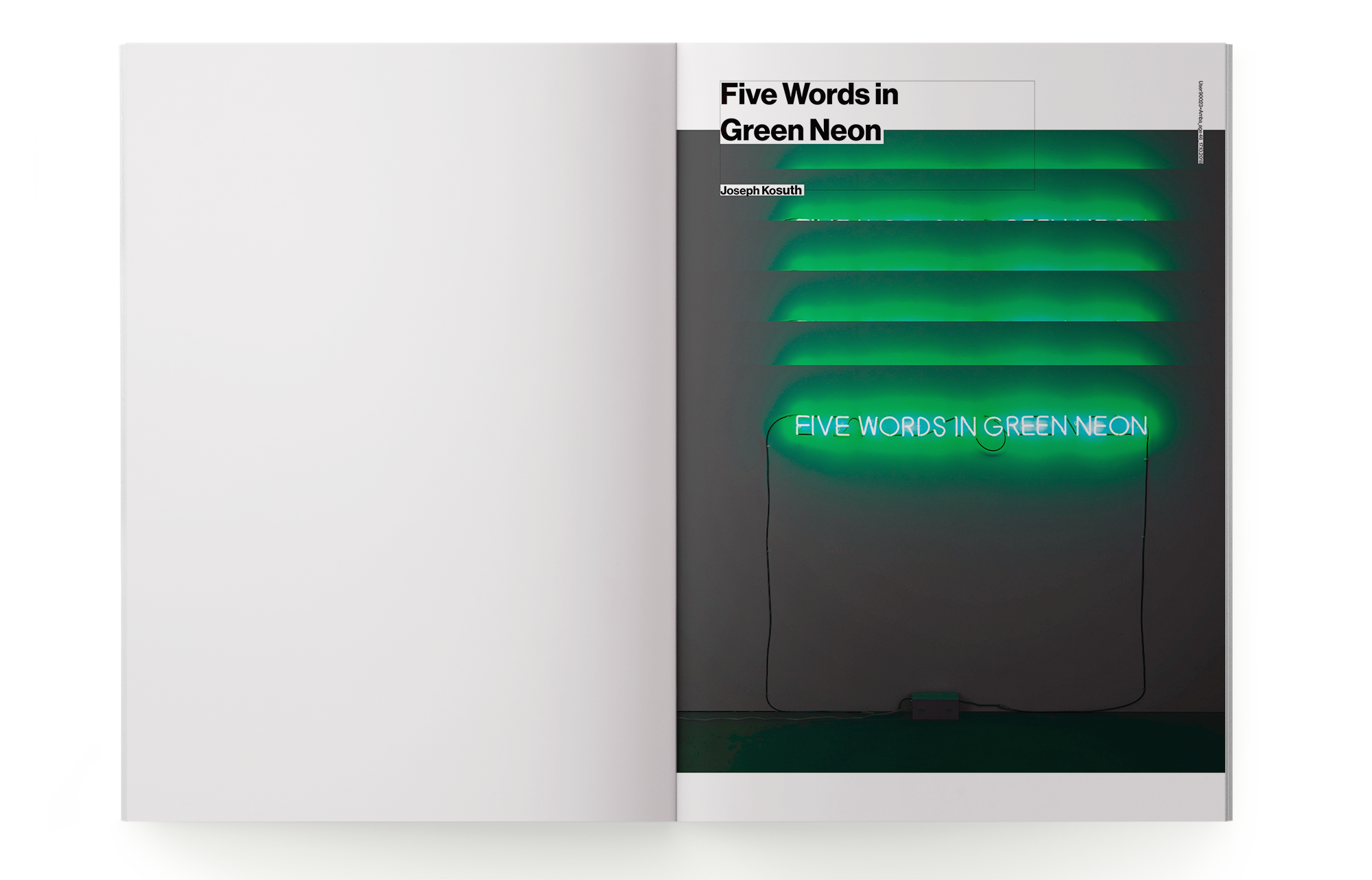

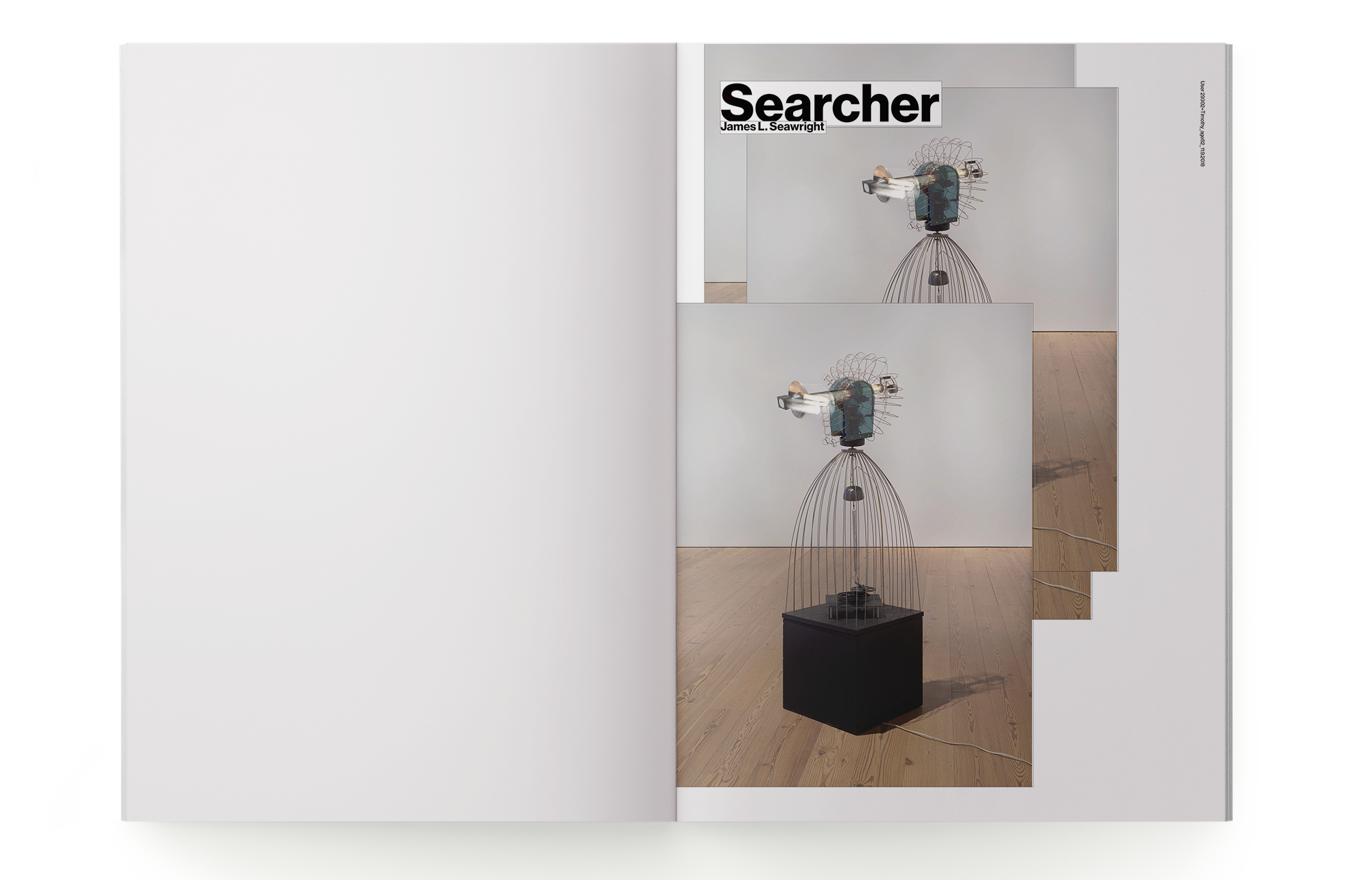
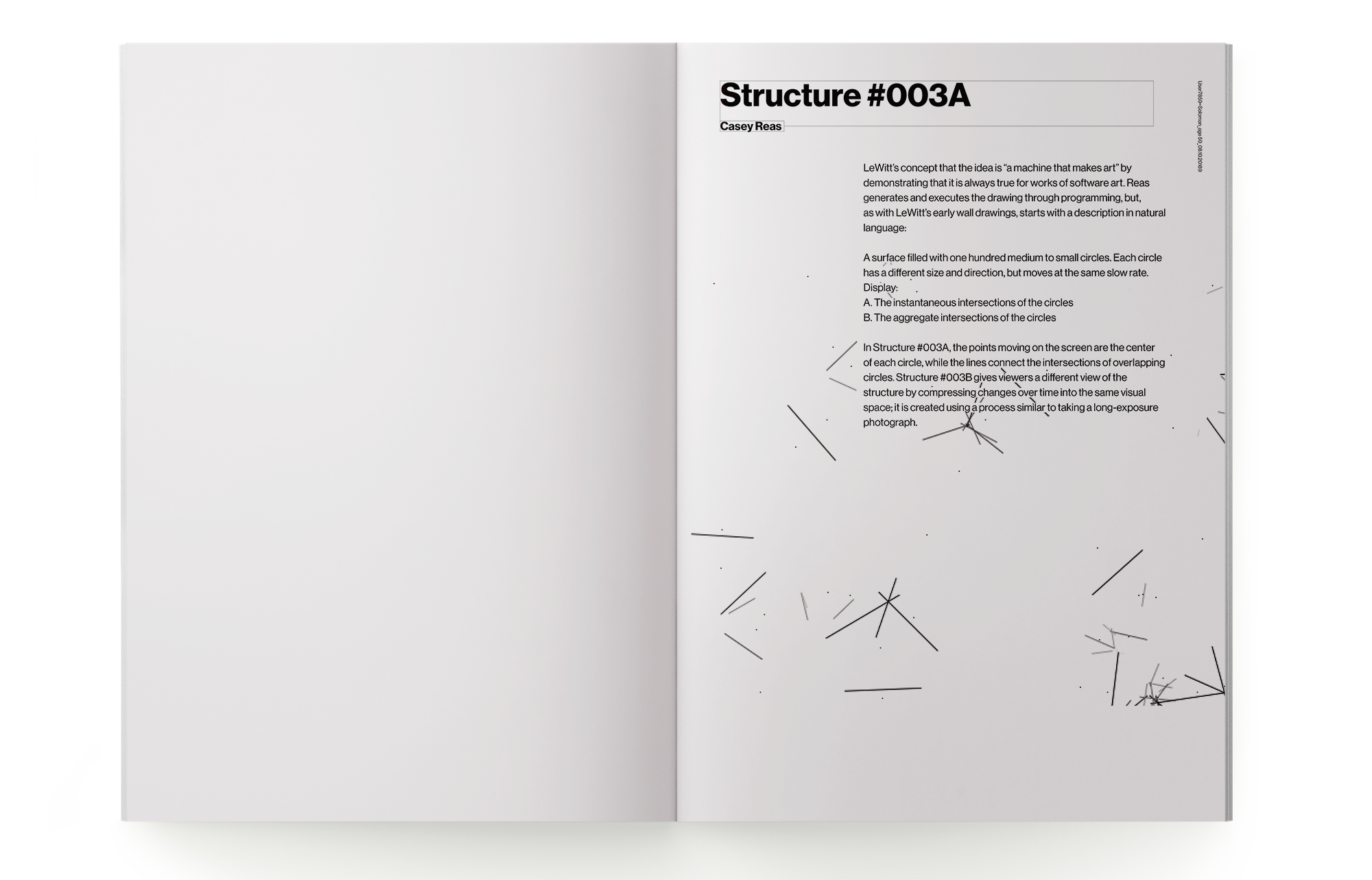
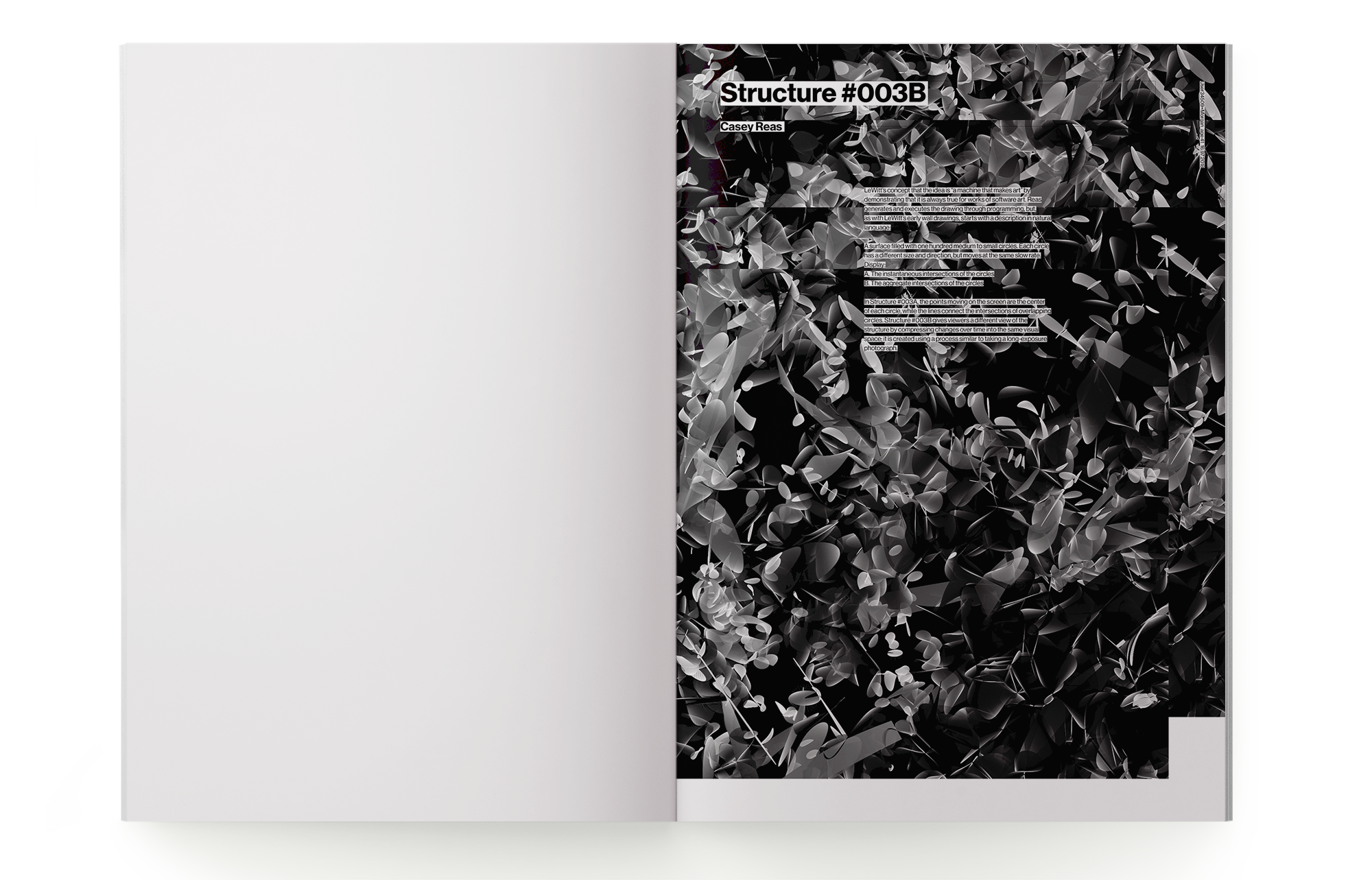
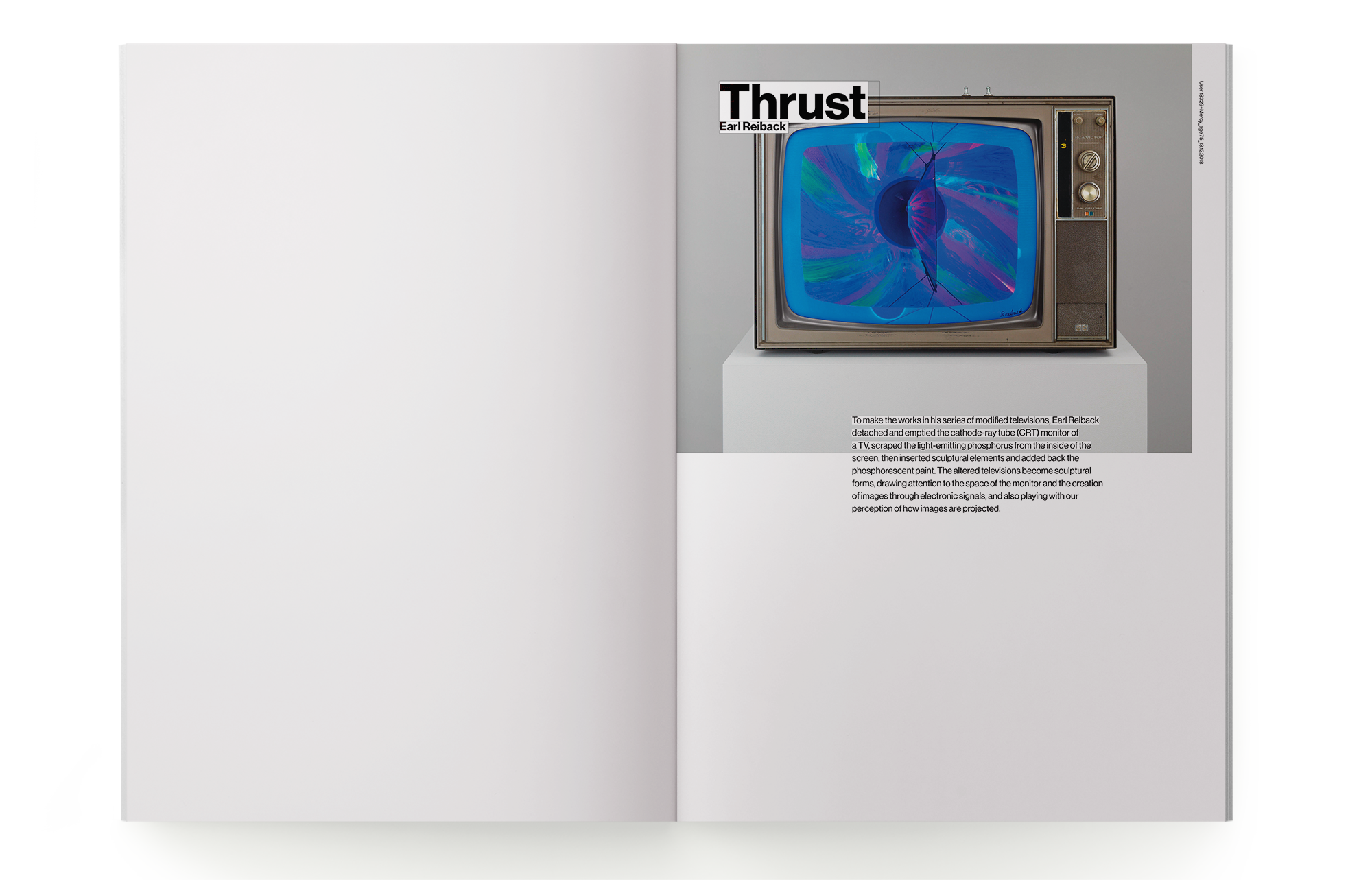



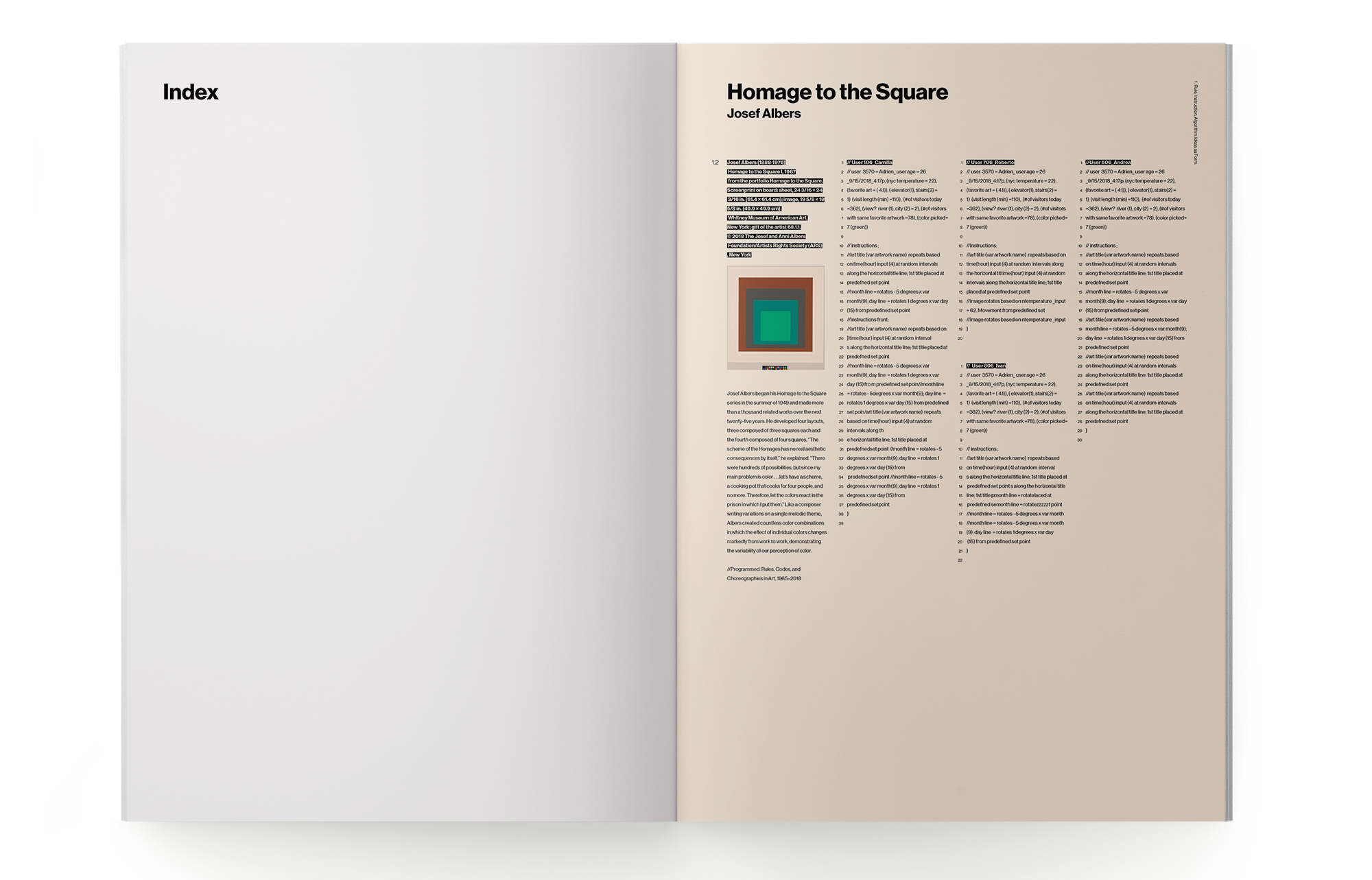

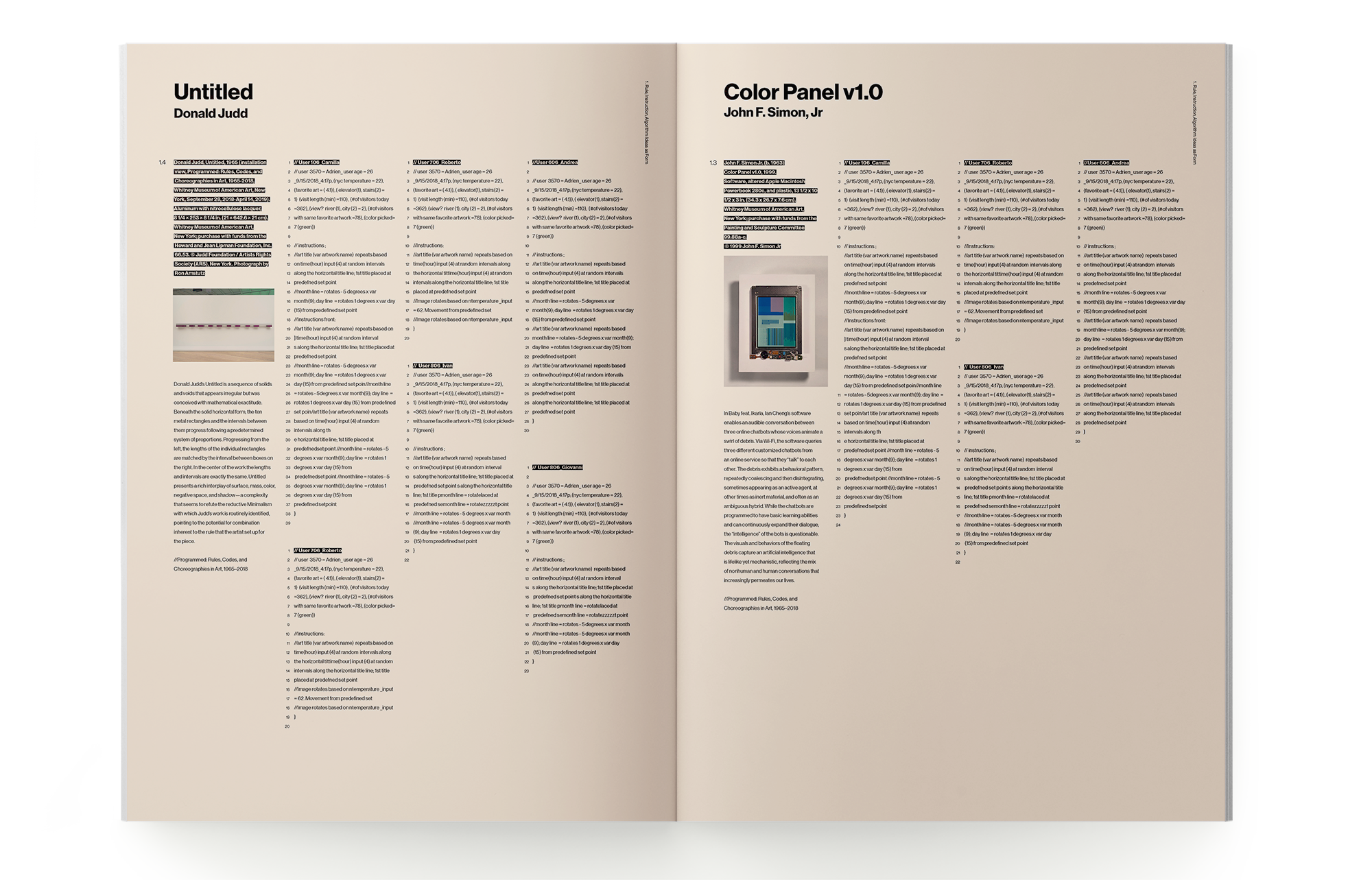

this catalogue has been programmed
Publication concept developed in the context of the MA in Visual Communication and Design FHNW HGK | The Book as ExhibitionThe Whitney Museum of American Art‘s exhibition: Programmed: Rules, Codes and Choreographies in Art, 1965-2018, focused on works of art from the permanent collection that were based on artist‘s instructions. This exhibition catalogue is likewise designed as a unique, programmed catalogue which also follows instructions and uses data generated by the visitors to the exhibit to determine the layout of each individual page. Global data such as date, time and temperature were combined with user specific data such as name and age, as well as responses to questions. This data interacted with the elements on the page in predetermined ways to create unique individualized and sometimes unexpected layouts.
Visitors to the exhibition could choose to print on demand between 10 to 42 folded pages on newsprint of their personally generated designs as an instant catalogue. The paper and size were selected to reflect the immediacy and programmed nature of the catalogues. The final exhibition catalogue consists of a selection of these user-generated pages in response to each artwork in the exhibit. The catalogue is ever-evolving and could be generated to reflect whichever data was. selected; all visitors from a specific day, visitor‘s with the same favorite artwork or even the outdoor temperature. The catalogue functions then not only as an archive of the exhibit but also an archive of the experience of the creation of the user generated page.
Whitney Museum of American Art Programmed: Rules, Codes, and Choreographies in Art, 1965–2018 Sep 28, 2018 - Apr 14, 2019
Curators
Christiane Paul, Adjunct Curator of Digital Art, Carol Mancusi-Ungaro, Melva Bucksbaum Associate Director for Conservation and Research, with Clémence White, curatorial assistant.Tutor
Prof. Marion FinkCourse
Academy of Art and Design Basel | FHNW HGK Visual Communication Institute | The Basel School of Design MA in Visual Communication and Iconic Research | The Book as Exhibition - Visual Communication within Curatorial Practice Autumn term 2018, 2nd yearConcept and Design
Tammy Demelier, Alice FadaTypeface
Neue Haas Grotesk Text Pro 55 Roman,
Neue Hass Grotesk Display Pro 75 Bold
Paper
Estrella Matt, ISO-White, 60gm, Kaskad, Salmon, 80gm© 2018 by Visual Communication Institute, Academy of Art and Design, Basel, FHNW Tammy Demelier | Alice Fada